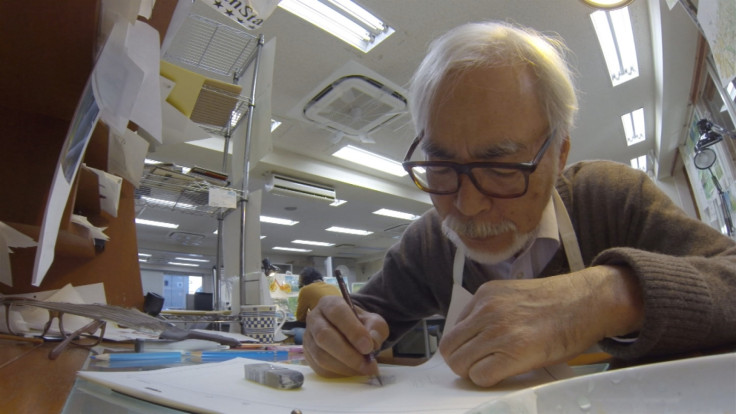Studio Ghibli's Hayao Miyazaki refuses to use AI deep learning and CGI for new feature
During consultations for Boro the Caterpillar, Miyazaki was hugely offended by an AI video clip of zombies.

Legendary Japanese animator Hayao Miyazaki is likely to stick to hand drawing for as long as his career continues, after failing to see eye-to-eye with computer-generated animation (CGI) and artificial intelligence.
Miyazaki, who has previously gone into retirement twice, is now working on a new feature film that he never had time to focus on during his extensive career – Boro the Caterpillar, which is his retelling of the popular children's book The Very Hungry Caterpillar, which was written and illustrated by Eric Carle.
His thoughts and feelings about animation, life, mortality and reviving the disbanded Studio Ghibli for one last film are told in the documentary Never-Ending Man: Hayao Miyazaki. In the documentary, Miyazaki is concerned that he cannot make the caterpillar's motions as natural and vigorous as they are in real life, so he turns to CGI instead.
After a great deal of experimenting, Miyazaki is still unhappy with the animation, so he agrees to meet with Nobuo Kawakami, the chairman of Dwango Artificial Intelligence Laboratory. Kawakami wishes to demonstrate how artificial intelligence, in particular a machine learning method known as" deep learning" can be used to process images.
Deep learning involves the use of neural networks — large networks of traditional computers that are trained using algorithms to solve complex problems, thus making them artificially intelligent beyond their individual capabilities. They work in a similar way to the human nervous system. Different layers of the neural network examine different parts of the problem and combine their results to produce an answer.
Dwango, which sees artificial intelligence as a "gift" to future generations, uses neural networks and sophisticated algorithms to determine exactly how the character would move in real life, after being trained on a model of movements similar to what it needs to create.
Hayao Miyazaki deeply offended by deep learning demonstration
Kawakami shows Miyazaki a video clip of a zombie's mutilated body twisting as it struggles to move across a digital floor, but unfortunately Miyazaki was incredibly offended by the demonstration.
"Let me just say – every morning I used to see a friend who's disabled. He would walk up to me, one leg turned outward, so it's hard for him to walk. Even a high five is hard for him. His stiff hand and mine touch. I think of him, and can't say I like this," Miyazaki told Kawakami and a room full of stunned Studio Ghibli employees.
"Whoever made it gives no thought to pain. It's very unpleasant. You can make horrible things if you want, but I want nothing to do with it. It's an awful insult to life."
Although Kawakami tried to explain that the zombie clip was merely a sample of what artificial intelligence could do, Miyazaki was so put off that he decided to give up on CGI completely and return entirely to hand drawn illustrations.
Boro the Caterpillar is slated to come out in 2018, and Miyazaki faces an uphill challenge as the hand drawn animation industry has all but died in Japan.
Developed by Japanese national broadcaster NHK, the feature-length version of the documentary was shown in London on 10 April.
Never-Ending Man: Hayao Miyazaki will be broadcast on 3 June 2017 at 15:10 /21:10 and on 4 June 2017 3:10/9:10 on Sky (ch 507), Freesat (ch 209), Virgin (ch 625) and TV Player and online and via the NHK World TV app on iOS, Android, Apple TV and Android Fire TV.
© Copyright IBTimes 2025. All rights reserved.






















